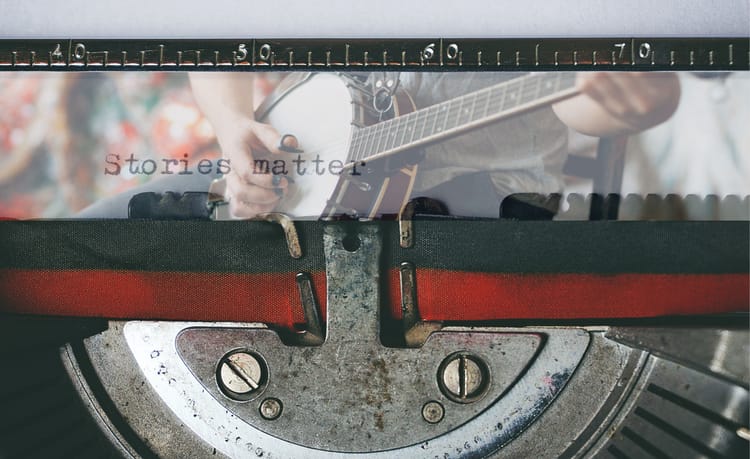The Art of the Mashup

Double, double, toil and trouble. The witches crouch out on the moor of the imagination, cold winds batting at their robes. Into the cauldron they toss assorted ingredients – amphibian offcuts, reptile remnants – boiling them until the boundaries between them melt and meld.
The effect of that stew could be the rise and fall of kingdoms, the calling down of curses. (It could also be a hearty supper.) But while the separate ingredients are important, what really matters is the fire licking at the iron, breaking things down into new forms, reconfiguring that which was into that which is. Recombination. Friction. Fusion. This, we understand, is magic. And here, another word for that kind of magic is heat.
Welcome to Heat Death, the newsletter about mixtapes and melting pots. It's the dawn of spooky season, and a cool breath races across the country, a promise that leaves will fall and we might all get to bundle up at some point. Saul has returned to the DC Soviet to prepare for its cross-country move. (He will shortly be joined there by the Elbein parents, taking a well-earned and long-awaited vacation.) Because every action has its equal and opposite, the flowing of the majority of the family to Washington DC has left Asher to head back to Atlanta as a matter of cosmic balance. There he'll be fully embracing the title of "bird journalist" and churning out stories and pitches for outlets like Scientific American and Audubon. (More on that in a future newsletter.)
But enough comings and goings. Here at Heat Death, we're as thematically interested in remixes and recontextualizations as we are in exhaustion and the bleeding out of energy.
Today, we've got two separate pieces lined up for you that explore the magic of fusion. In our free essay, music journalist and Minnesota Public Radio editor Nathan Stevens takes on the challenge of talking about song mashups, and fields ten examples that Asher threw at him. And for paid subscribers, Saul writes out the magical formula for staring into the cauldron of creation: his recipe for a tasty curry.
It's Heat Death. Stay with us.
Principles of Plunderphonics
Nate here. I and Heat Death cofounder Asher are both fond of mashups, the act of slamming two or more songs together to see what happens. Some of them work really well. Some of them are disasters. All of them have a history.
At the turn of the century—amid the growth of file-sharing websites and Y2K freak-outs, the wonderfully named “plunderphonics” movement broke out. Spearheaded by Daft Punk’s Discovery, DJ Shadow’s Endtroducing and The Avalanches’ Since I Met You, albums that had little in the way of “original” music found critical and commercial success. Their creators put their stamp on dozens of different songs, remixing, rearranging and regurgitating them into new tunes. It was the perfect antidote to the tone-deaf freak-out of mega stars like Metallica, who claimed that Napster and Limewire would (somehow) bankrupt the music industry’s scant millionaires.
But there’s nothing that the industry can’t eventually consume and shit out. While the DJs of Jamaica (the neighborhood) and Jamaica (the island)—as well as their descendants—were genre agnostics, mixing beats and mashing up songs with anarchic glee, the industry became genre nihilists. As pointed out by Grady Smith’s excellent essay “This beat is killing country music,” modern country music lifts the beats of pop and R&B, not to expand the possibilities of their own genre, but to create a facsimile of familiarity.
Sonic tricks like the millennial whoop or the “heyo!” chants of The Lumineers were soon the backbone to arena rock jams and pop hits in equal amounts. Just like Space Jam 2’s relentless parade of references is to storytelling, pop music’s approach to song production seeks to unite all music fans into one massively profitable demographic.
So, what did the plunderphonic brigade do in response?
After the blockbuster releases of Daft Punk and The Avalanches, the world of Plunderphonics became more open to pop appeal as much as sonic mutation. The best known example might be Danger Mouse’s The Grey Album, a mash-up of The Beatles’ self-titled record (popularly dubbed The White Album) and Jay-Z’s The Black Album.
Aside from launching Danger Mouse’s career as the producer dejoure of left-field pop artists and MCs, The Grey Album revealed the archivist’s mind at the heart of the plunderphonics movement. It was an album lovingly dedicated to both artists, and a gleeful unraveling of the tropes and sonic movements that connected them. Of course the scuzzy proto-metal of “Helter Skelter” could form the backing track to Jay’s “99-Problems,” and, in the meantime, the song is a delightful sonic recap of the fusion of rock and metal over the years. I can’t hear The Grey Album without being swept into a stream of musical references: the influence of Ice-T’s political rap-metal, Rick James’ “Punk Funk,” the Beastie Boys’ slimeball rock anthems or Rage Against the Machine’s fiery screeds.
Since then, mash-ups – unrestrained by IP and licensing laws – have followed two rules: make bangers, and find the threads of history that connect songs.
For example, Amerigo Gazaway’s Yasiin Gaye: The Departure found the shared humanity of the music of Marvin Gaye and Yasan Bay (formally Mos Def). It works, not just because soulful backing tracks were Bay’s bread and butter during his heyday, but also because the two artist’s views on social upheaval were connected by a deep well of empathy— plus a depressing realization little had changed for black men in America between “Mercy Mercy Me (The Ecology)” and “Mathematics.”
The work of William Maranci, which flits between ascendant and shit-posting, also tugs and underpinnings of songs that might not be recognizable on first listen. His most well known mash-up, between metalheads Deftones’ “Change (in the House of Flies)” and Brittany Spears’ immortal banger “Toxic” reveals the sexy anger that simmers in both songs. It works because the emotional content is close enough that, instead of steely strings, a punishing guitar groove can make Spears’ lamentations on doomed — but oh so hot — love as heavy as a Black Sabbath tune.
In all of these examples, mash-ups are an expansion as much as a transformation. They stand at an opening handicap compared to their cousin, the cover song: They must be compared to not just one, but multiple originals that are, by default, more famous than the remixed product. Good or bad, making them involves taking a big swing.
But enough theory. Let’s put this into practice. I, your resident music nerd, was tossed 10 modern mashups by Asher and told to “go get.” In this extremely scientific and objective breakdown, I categorize good mashups into two categories. The first is stitching together the best parts of disparate songs to make a piece better than the sum of its parts. The second is recontextualization, with different styles, sounds and eras making other portions of the song, whether musical or lyrical, change context or let us see the underlying message in a new way.
(Let it be known that the mash-ups provided to me by Asher were completely new to me and all complaints should be forwarded to him.)
Greater Than The Sum of Its Parts
The best of the “better than the sum of its parts” category is Camila Cabello’s “Havana” and Lil Nas X’s “MONTERO.” The strength of "Havana" lies in its slinky rhythm as well as Cabello’s excellent hook. Lil Nas X, outside of “Old Town Road,” has never been a hook master: his charisma reaches its zany peak during verses. So, simply stripping “MONTERO” to Lil Nas X’s most charming, energetic moments and slapping them on catchiest segments of “Havana” is addition by subtraction. Both are good songs on their own, but the chemical reaction between the two strips the fat off, leaving only the best of both worlds.
This mashup, however, is a bit of a rarity. With many plunderphonic experiments seemingly drawn into the monogenre mire, as mentioned above, the degraded form of the “remix” tends to rely less on clever sonic tricks then on the fact that modern pop is so systematized that riffs can slide in and out of a new song like a flash drive from a USB port. To wit: "Heathens Don't Need No Guillotine,” which mostly proves that 21 Pilots, Ellie Goulding and Jon Bellion all are subjects to a mono-beat.
Same goes for Hugh Jackman and Dua Lipa’s duet in “Physical/Greatest Show,” where the gaudy background of the PT Burnum fever dream is replaced with a sleek 80s pulse — which proves mostly that even the grandiose world of musicals isn’t safe from the cookie-cutter formula. This is perhaps even the source of The Greatest Show's success: all the songs are full of millennial whoops and other label pop larding. The resulting mix ends up sounding like a reject from The Weeknd.
The zenith of this copy-paste songwriting goes to a circles-within-circles, Inception-style morass that jams together Billie Eilish’s “Bad Guy” and The Jonas Brothers’ “Sucker.” This is less about throwing shade on Eilish than a comment on The Jonas Brothers’ failed revitalization. There’s an argument that “Sucker” was already a mashup of Frankenstein proportions (that which has already hit the charts can never die) with not-quite-plagiarized versions of Portugal, The Man, Rob Thomas and Gorillaz fed through the food processor. But trying to comprehend a mashup made up of a dozen other mashups is making my eyes go cross.
Swing For The Fences
The other type of mashup, recontextualization, is far more ambitious, which accounts for more stunning successes and trainwreck failures. Lana Del Ray was in two of the suggested mashups, and she serves as a perfect example of the way the form lets artists recontextualize both sound and lyrics. Del Ray has been lounging on the shoulders of giants since she arrived on the scene as an amalgamation of Nancy Sinatra, Stevie Nicks and Marilyn Monroe. Del Ray’s Hollywood sadcore leans on these influences so hard that it's hard to tell if it's a loving pastiche or a cynical rip off. Both mashups presented play with those expectations.
“Off To The POP/STARS” takes Del Ray’s 9:30am blunt mood and flips it on its head, with a fast paced bit of K-Pop bombast behind her lazy delivery, providing some compelling cognitive dissonance. The beat races and purrs like a car engine, held in check by Del Ray’s voice: the song idles at the starting line, building up potential energy and waiting to the signal to go.
At the opposite end is “Wicked Jeans,” a pseudo-duet between Del Ray and dark country brooder Chris Isaak. Contrary to popular belief, Isaak’s “Wicked Game” was not about a tortured love affair, but a one night stand. And Isaak and Del Ray are masters of turning meaningless sex and their own jerkishness into a near mythical scope. It all sort of falls apart at the end, of course: this kind of posturing usually does. These two songs deserve each other.
Other revitalizations may tug at the threads of music history, or even predict the future. “God’s Gonna Cut You Down,” is a fourway mashup of metal-adjacent rock artists. Let’s count the influences:
- The drum sample of Led Zeppelin's “When the Levee Breaks” is likely in the top 5 most sampled songs of all time, so it counts as the “free” space on our mash up bingo.
- Meanwhile, Beastie Boys tried to out-frat Van Halen before they got serious about rap.
- Johnny Cash’s Man in Black mythos inspired as many metal outfits as it did country stars.
- And, of course, The Beatles’ “Come Together” is one of the founding documents of heavy metal.
None of these artists were metal in themselves, but by taking the most vicious moments from their most banger songs, the result is a sort of magic eye picture for metalheads.
As opposed to reverence for the past, “Personal Skinhead” — a menage a trois between a trio of Depeche Mode, Kanye West and Marylyn Manson, essentially predicted the future. “Personal Skinhead” was released in 2014, and West just brought out Manson for the botched roll out of his 2021 record Donda. I’d say the creators were onto Kanye’s influences, both in music and shock tactics.
These recontextualizations can also act as an anthropological experiment, finding the disparate threads that connect different genres. The crossover of Tupac’s “Holler If Ya Hear Me” vs Ennio Morricone’s “Ecstasy of Gold” places Golden Age hip-hop’s thirst for power and triumph against the classic soundtrack of the epic gunslinger western, which shoots the braggadocio of the lyrics into the stratosphere.
But, by the same token, smashing two songs together can as easily diminish the emotional thread of both. “Rumors Have it,” which works Fleetwood Mac and Adele together, misunderstands the strengths of both artists. Rumors is one of the foundational blocks of modern pop, casting the mold for Del Ray and other singers who stew in slowcore melancholy. Fleetwood’s Stevie Nicks is not going to reveal her “crystal visions' ' in any BPM over 80, nor with a wall of stomping sound behind her. It shatters the eerie mystic that defined Fleetwood Mac.
But Adele, who is not so much a human as the avatar of the entire Boston Pops smashed into one body, needs bombast. She’s one of the few singers whose torch songs actually sound like someone’s about to be set ablaze. Mashing them together undercuts both artists, with Adele’s hurricane pipes smashing through the nuance of Mac’s instrumental groove, and that same groove making Adele sound isolated.
Wither, The Mashup?
By and large, mash-ups have vanished from mainstream releases. The few exceptions like The Avalanches, Girl Talk and Neil Cicierega, are all in niches far from traditional album releases. The Avalanches are on the nostalgia circuit; Girl Talk dominates hip-hop production and festival rounds; and Cicierega makes shitposting his fulltime job.
One reason: the music industry got skittish after the “Blurred Lines” case, where Marvin Gaye’s estate successfully sued Robin Thicke for ripping off “Gotta Give It Up.” Afraid of future lawsuits, the industry, perversely, became less original rather than more. The beats that dominate modern country can’t be copyrighted because they owe more to Apple Garageband presets than to original compositions. The most generic, nothing-burger backdrops are also the safest.
Plunderphonic adventurers duck this by the simple expedient of not getting paid. With DJ sets, Soundcloud and Youtube as their outlets, they can, for now, avoid the trigger-happy juggernauts of the label IP wars. And this is the difference: In a twist that would make Kant proud, this is all about the intent. The monogenre for the music industry exists as a way to cover their asses and instill the habit of lazy, passive listening. For the plunderphonic brigade, it’s a matter of experimentation and revisitation of history.
And of course, the holy attempt to make bangers.
Nathan Stevens is a musician and editor at Minneapolis Public Radio. He's also a music journalist at The 2010's, where he interviews fascinating modern bands. You can follow him at @Reasonableradio.
The rest of this issue of Heat Death is for subscribers only – but you can easily become one of them! Join us for just 5$ a month.

